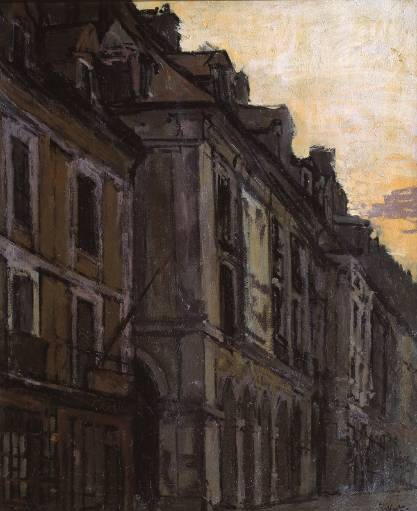IN 1817 it took John Sell Cotman 42 hours to make the crossing from Brighton to Dieppe. Having got over his travel sickness (this took another day or two) he proceeded to make some beautiful pencil and wash studies of Saint-Jacques Cathedral, of the castles of Dieppe and nearby Arques, that would later serve as illustrations to a book called The Architectural Antiquities of Normandy. It was a typical early nine-teenth-century project: Cotman was attracted to Dieppe, presumably, by his English Romantic taste for all things Gothic, for spandrels, flying buttresses, the subtle traceries of rose windows and quantities of crum-bling masonry. He is unlikely to have been aware of his part in establishing what John Willett, curator of Brighton City Museum's ''The Dieppe Connection'', refers to as ''the role of Dieppe as a meeting-point in the arts''.
Cotman's Saint-Jacques Facade, one of the first images you see in this beautiful and imaginative small exhibition, is a faded memento of the post-Napoleonic thaw in Anglo-French relations. For the long years of the Napoleonic wars, abroad had been inaccessible, inhospitable or just too plain dangerous to contemplate for the majority of English artists. But after 1815, the frontiers were down. Continental travel was, once again, possible. And it began, for most Englishmen and women, in Dieppe. Roughly midway between London and Paris, this small harbour town came to acquire a significance quite out of proportion to its size. It was the place where English insularity encountered its limits; the place where the familiar ended and the foreign began; the place where the limited horizons of home were broadened by the challenge of overseas.
By 1824, the crossing from Brighton to Dieppe had become considerably more pleasant than when Cotman used to make it. The first steam passage was made by the...


